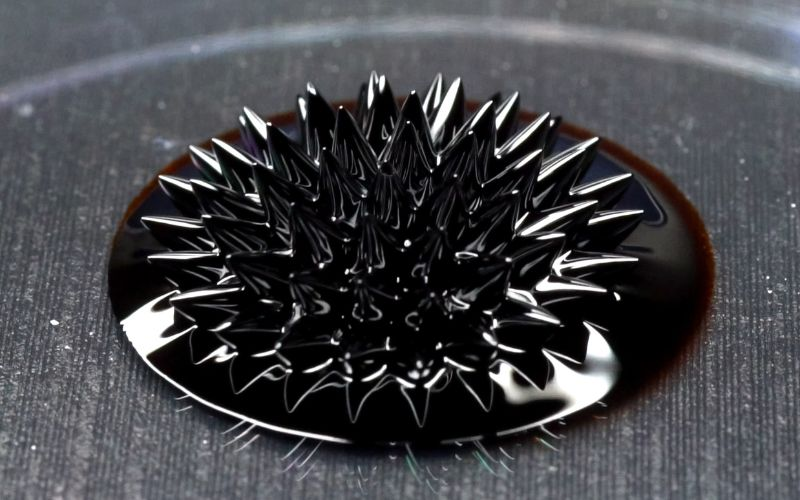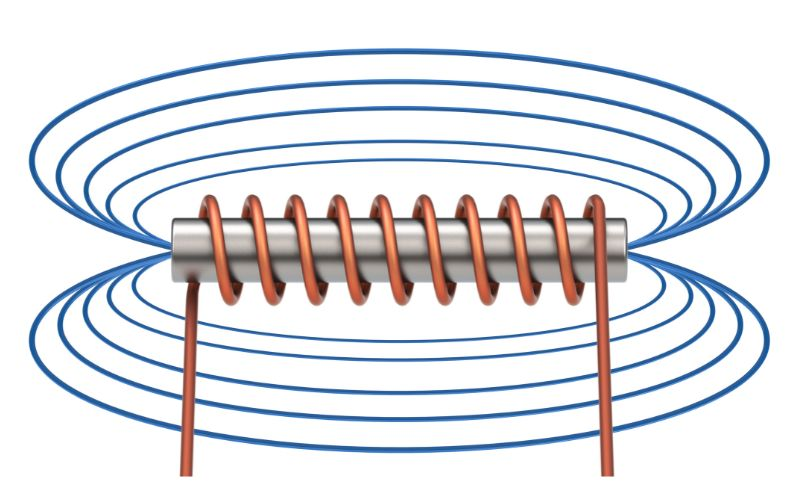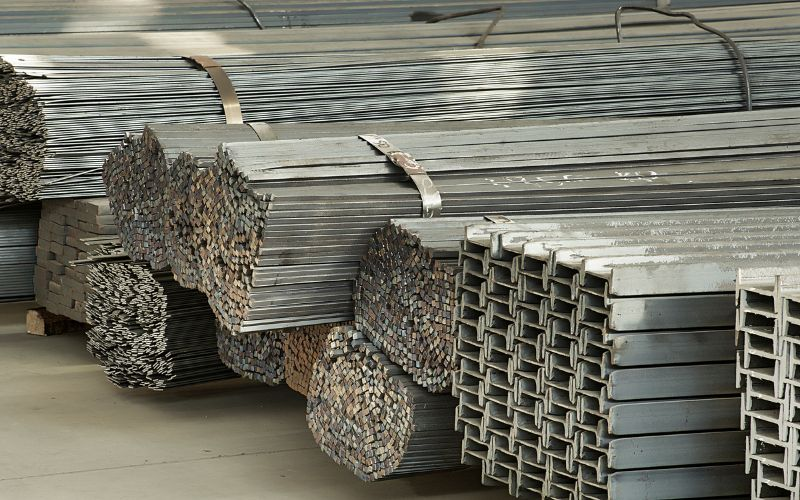
Ferromagnetic material has long fascinated scientists and engineers, stimulating their imagination with its unique properties and potential applications. From the simple fridge magnet to the complex machines of modern technology, this remarkable material plays a crucial role in our everyday lives. In this exploration of ferromagnetic material, we will explore its fascinating nature, its historical significance, and the countless ways it continues to shape our world.
Ferromagnetic material has a magnetic property at its core that distinguishes it from other materials. When exposed to a magnetic field, it becomes magnetized, attracting other magnetic objects and exhibiting a phenomenon known as ferromagnetism. This fascinating property has been used by humans for centuries, dating back to ancient civilizations that admired the power of magnetites.
Throughout history, the understanding and use of ferromagnetic materials has evolved significantly. From the groundbreaking discoveries of Michael Faraday and James Clerk Maxwell in the 19th century to modern advances in materials science and engineering, our knowledge of ferromagnetism has expanded exponentially. Today, ferromagnetic material is at the heart of countless technological marvels, from electrical motors and generators to magnetic storage devices and medical imaging devices.
Ferromagnetic material is also a fascinating material for science in addition to its practical application. The study of its microscopic structure and the complex mechanisms underlying its magnetic behavior continue to fascinate researchers and expand the limits of our understanding of the fundamental forces that govern our universe.
We embark on this journey through ferromagnetic material and invite you to join us in discovering the secrets of the attraction. From the origins of the name to the cutting-edge research that will shape its future, we will explore the depths of this magnetic world, opening doors to new possibilities and inspiring new explorations. So buckle up and prepare to be magnetically drawn into the fascinating world of ferromagnetic material.
What is a ferromagnetic material?
Ferromagnetic materials are substances that have strong magnetic properties. They are widely used in various areas such as electronics, telecommunications and power generation. To effectively utilize their magnetic properties, it is important to understand the nature of ferromagnetic materials.
An important property of ferromagnetic materials is their ability to retain a significant portion of their magnetization even when an external magnetic field is removed. This property is called hysteresis. It allows the use of ferromagnetic materials such as permanent magnets, essential in various devices such as electric motors and generators.
The magnetic behavior of ferromagnetic materials results from the alignment of their atomic spins. In these materials, neighboring atoms tend to align their magnetic moments parallel to each other, creating domains with a net magnetic moment. When an external magnetic field is applied, these domains align in the direction of the field, resulting in a stronger magnetic effect.
Iron, nickel and cobalt are the best known ferromagnetic materials. However, some other elements and compounds also exhibit ferromagnetism, such as gadolinium and some alloys. The presence of certain impurities or the introduction of specific crystalline structures can also enhance or suppress the ferromagnetic properties of a material.
Understanding the behavior of ferromagnetic materials is crucial for several technological advances. Enables the development of more efficient magnetic storage devices such as hard drives and magnetic tapes. Furthermore, the study of ferromagnetic materials contributes to the development of magnetic sensors, microwave devices, and magnetic resonance imaging (MRI) technology.
In summary, ferromagnetic materials have unique magnetic properties that make them valuable for countless applications. Its ability to retain magnetization and exhibit strong magnetic effects has revolutionized several industries. Further research and development in this area will continue to open up new opportunities for the innovative use of ferromagnetic materials.
What are the properties of ferromagnetic materials?

Ferromagnetic materials are a group of substances that have strong magnetic properties. These materials are widely used in various industries, including electronics, telecommunications and power generation. Understanding the properties of ferromagnetic materials is crucial for engineers and scientists working in these areas.
One of the most important properties of ferromagnetic materials is their ability to be magnetized. When these materials are exposed to a magnetic field, they align their magnetic moments in the same direction, creating a strong magnetic force. This property is known as ferromagnetism and is responsible for the magnetic behavior observed in materials such as iron, nickel and cobalt.
Another important property of ferromagnetic materials is their ability to maintain magnetization even after removal of the external magnetic field. This property, known as hysteresis, allows these materials to create permanent magnets. The strong magnetic field generated by ferromagnetic materials makes them ideal for applications such as magnetic storage devices and electric motors.
Ferromagnetic materials also exhibit strong magnetic interactions between neighboring atoms or ions. This property, the exchange interaction, is responsible for the formation of magnetic domains within the material. These domains align in the same direction, further improving the material's overall magnetic properties.
In addition to their magnetic properties, ferromagnetic materials also have high electrical conductivity. This makes them suitable for applications where magnetic and electrical properties are required, such as transformers and inductors.
In summary, ferromagnetic materials possess unique properties that make them invaluable in numerous industries. Their ability to become magnetized, maintain magnetization, and exhibit strong magnetic interactions makes them essential to the development of modern technologies. Understanding these properties is crucial for engineers and scientists working with ferromagnetic materials because it allows them to design and create innovative solutions for diverse applications.
What are some examples of ferromagnetic materials?
Ferromagnetic materials are substances that have strong magnetic properties. These materials are characterized by the ability to become permanently magnetized when exposed to a magnetic field. They are crucial in several sectors, including electronics, telecommunications and energy.
One of the best-known examples of ferromagnetic material is iron. Iron is widely used in the manufacture of magnets due to its high magnetic strength and low cost. It is also used in the construction of transformers, motors and generators.
Another common ferromagnetic material is nickel. Nickel has excellent magnetic properties and is often alloyed with other metals to improve their strength and durability. It is widely used to manufacture rechargeable batteries, magnetic recording media and electrical contacts.
Cobalt is another example of a ferromagnetic material. It is strongly magnetic and has a high Curie temperature, making it suitable for applications in high temperature environments. Cobalt is used to make magnetic alloys such as alnico and samarium-cobalt magnets.
Manganese is a ferromagnetic material commonly used in steelmaking. It improves the magnetic properties of steel and is essential for the manufacture of transformers and electric motors.
Other examples of ferromagnetic materials include gadolinium, dysprosium and neodymium. These rare earth metals have strong magnetic properties and are used in a variety of applications, including magnetic resonance imaging (MRI) machines, magnetic sensors, and magnetic data storage devices.
In summary, ferromagnetic materials are critical in numerous industries due to their ability to be permanently magnetized. Iron, nickel, cobalt, manganese and rare earths, such as gadolinium, dysprosium and neodymium, are examples of ferromagnetic materials that have wide applications in various technological and industrial fields.
How do ferromagnetic materials behave in a magnetic field?

Ferromagnetic materials such as iron, nickel and cobalt exhibit fascinating behavior when exposed to a magnetic field. Understanding how these materials respond to magnetic forces is critical in several sectors, including electronics, telecommunications and energy.
One of the most notable properties of ferromagnetic materials is their ability to be permanently magnetized. In a magnetic field, the individual magnetic moments of atoms align with the external field, resulting in a net magnetic moment for the material. This alignment remains even after the external field is removed and creates a magnet. This property makes ferromagnetic materials ideal for applications such as compass needles and refrigerator magnets.
Furthermore, ferromagnetic materials present a phenomenon known as hysteresis. Hysteresis refers to the delay between the applied magnetic field and the resulting magnetization of the material. This delay is caused by the resistance of the atomic magnetic moments to realign themselves according to the changing field. As a result, ferromagnetic materials retain their magnetization even when the external field fluctuates.
In addition to their magnetization properties, ferromagnetic materials have high magnetic permeability. This means they can easily conduct magnetic flux, making them valuable for transformers and inductors. High permeability allows for efficient energy transfer and helps strengthen magnetic fields.
In summary, ferromagnetic materials exhibit unique behavior in the presence of a magnetic field. Their ability to be permanently magnetized, exhibit hysteresis and possess high magnetic permeability makes them indispensable in countless industries. By harnessing the properties of ferromagnetic materials, we can develop innovative technologies that will revolutionize our world.
What is the Curie temperature of ferromagnetic materials?
The Curie temperature is a fundamental property of ferromagnetic materials that determines their behavior at different temperatures. It is named after Pierre Curie, a French physicist who made a significant contribution to the study of magnetism.
Simply put, the Curie temperature is the point at which a ferromagnetic material loses its permanent magnetism. Below this temperature, the material has strong magnetic properties, such as the ability to attract or repel other magnets. However, if the temperature rises above the Curie temperature, the material gradually loses its magnetism and eventually becomes paramagnetic or nonmagnetic.
The Curie temperature varies depending on the specific composition and structure of the ferromagnetic material. Different materials have different Curie temperatures, ranging from a few degrees Kelvin to several hundred degrees Celsius. Some common examples of ferromagnetic materials and their Curie temperatures are iron (770 °C), nickel (358 °C), and cobalt (1121 °C).
Understanding the Curie temperature is crucial for many technological applications. For example, it is crucial to the development and manufacturing of magnetic storage devices such as hard drives. By carefully selecting materials with appropriate Curie temperatures, engineers can optimize the performance and stability of these devices.
It is worth mentioning that the Curie temperature is influenced by external factors such as pressure and magnetic fields. The application of high pressure or strong magnetic fields can change the Curie temperature of a material, providing opportunities to further control and manipulate its magnetic properties.
In summary, the Curie temperature is a crucial characteristic of ferromagnetic materials that determines their magnetic behavior at different temperatures. By understanding and exploiting this property, scientists and engineers can develop innovative technologies based on magnetism.
Can ferromagnetic materials be demagnetized?

Ferromagnetic materials, which retain their magnetization even after the removal of an external magnetic field, have long fascinated scientists and engineers. However, the question often arises as to whether these materials can be demagnetized. The answer, in short, is: yes.
Demagnetization is the reduction or elimination of the magnetic field within a material. Although ferromagnetic materials are very resistant to demagnetization, it is possible to demagnetize them using several methods.
A common method is heating above the Curie temperature. At the Curie temperature, a ferromagnetic material loses its magnetic properties. Heating the material above this temperature and then slowly cooling it can disrupt the alignment of the material's magnetic domains, resulting in demagnetization.
Another method involves applying an alternating magnetic field to the material. This field causes the magnetic domains to continually change direction, resulting in an overall loss of magnetization. This process is often used in industrial applications to demagnetize ferromagnetic materials.
Additionally, mechanical shocks or vibrations can demagnetize ferromagnetic materials. Impact or vibration causes the magnetic domains to lose alignment, resulting in loss of magnetization.
It is important to note that the ease of demagnetization depends on the specific properties of the ferromagnetic material. Some materials are more resistant to demagnetization than others and the demagnetization process may need to be adjusted accordingly.
In summary, although ferromagnetic materials have a strong tendency to retain their magnetization, they can actually be demagnetized through various methods, such as heating, applying alternating magnetic fields, or exposing them to mechanical shock or vibration. Understanding the demagnetization process is essential for applications where precise control of magnetization is required.
What applications are there for ferromagnetic materials?
Ferromagnetic materials with their unique magnetic properties are used in a wide variety of areas. From technology to medicine, these materials play a critical role in modern society.
One of the best-known applications of ferromagnetic materials is in the area of electronics. Magnetic storage devices, such as hard drives and magnetic tapes, rely on these materials' ability to store magnetic fields. This allows the storage and retrieval of large amounts of data, making it essential for our digital world.
In addition to electronics, ferromagnetic materials are widely used in the manufacture of electrical motors and generators. The magnetic properties of these materials allow for efficient energy conversion, making them ideal for powering everything from small household appliances to large industrial machines.
Another important application of ferromagnetic materials is in the medical field. Magnetic resonance imaging (MRI) machines use the magnetic properties of these materials to produce detailed images of the human body. This non-invasive imaging technique has revolutionized medical diagnosis, allowing doctors to detect and diagnose various diseases with high precision.
Furthermore, ferromagnetic materials are used in the manufacture of transformers and inductors. These devices are essential for the transmission and distribution of electrical energy, allowing efficient transfer of energy over long distances.
In summary, ferromagnetic materials can be used in a variety of ways in a variety of industries. From electronics to medicine, its unique magnetic properties enable the development of innovative technologies that shape our modern world. As research and technology advances, we can expect even more applications of ferromagnetic materials.
How are ferromagnetic materials used in magnetic storage devices?

Ferromagnetic materials play a crucial role in the development and functioning of magnetic storage devices. These materials have unique properties that make them ideal for storing and retrieving large amounts of data on a variety of electronic devices, such as hard drives and magnetic tapes.
One of the most important properties of ferromagnetic materials is their ability to maintain a magnetic field even when the external magnetic field is removed. This property, called hysteresis, allows data to be stored stably for long periods of time. The most commonly used ferromagnetic material in magnetic storage devices is iron because it has high magnetic permeability and low coercivity.
Hard drives use ferromagnetic materials to create small magnetic domains that represent binary data. These domains can be magnetized in one of two directions, corresponding to the binary values 0 and 1. By applying magnetic fields through read/write heads, data can be written or read in these domains, enabling the storage and retrieval of information.
Magnetic tapes also use ferromagnetic materials. The tape is coated with a thin layer of ferromagnetic material such as iron oxide. Data is stored on tape as magnetic patterns and a magnetic head is used to read and write the information.
The use of ferromagnetic materials in magnetic storage devices offers several advantages. They offer high data density, allowing you to store large amounts of information in a compact space. Additionally, they offer non-volatile memory so data is retained even if the power is turned off.
In summary, ferromagnetic materials are essential components in magnetic storage devices. Their unique properties enable reliable and efficient data storage and make them indispensable in modern electronic devices.
In summary, ferromagnetic materials are a fascinating topic with many applications and properties. In this post, we look at various aspects of these materials, including their definition, properties, examples, behavior in magnetic field, Curie temperature, demagnetization, applications, and use in magnetic storage devices.
We learned that ferromagnetic materials are substances that have strong magnetic properties due to the alignment of their atomic magnetic moments. This unique property allows them to be used in various industries, such as electronics, telecommunications and medicine.
The most important properties of ferromagnetic materials include their ability to retain magnetization even after removal of an external magnetic field, their high magnetic permeability and their tendency to form magnetic domains.
We also discuss the behavior of ferromagnetic materials in a magnetic field, where they align with field lines, leading to the formation of magnetic domains. Additionally, we explored the concept of Curie temperature, which is the temperature at which ferromagnetic materials lose their magnetic properties.
Furthermore, we investigated the demagnetization process and how ferromagnetic materials can be demagnetized by various methods, such as heating or applying an alternating magnetic field.
The areas of application of ferromagnetic materials are extensive and diverse. They are used to manufacture transformers, motors, generators, magnetic sensors and magnetic storage devices. Speaking of which, we looked at the role of ferromagnetic materials in magnetic storage devices such as hard drives and magnetic tapes, where their magnetic properties are crucial for data storage.
In the future, we can expect more advancements and developments in ferromagnetic materials. As technology continues to advance, new applications and uses for these materials are likely to emerge.
In conclusion, understanding ferromagnetic materials is crucial for various industries and scientific research. By leveraging its unique properties, we can continue to innovate and improve our technological capabilities. Thank you for reading this post and we encourage you to leave comments or feedback. Your insights and thoughts are very welcome.

